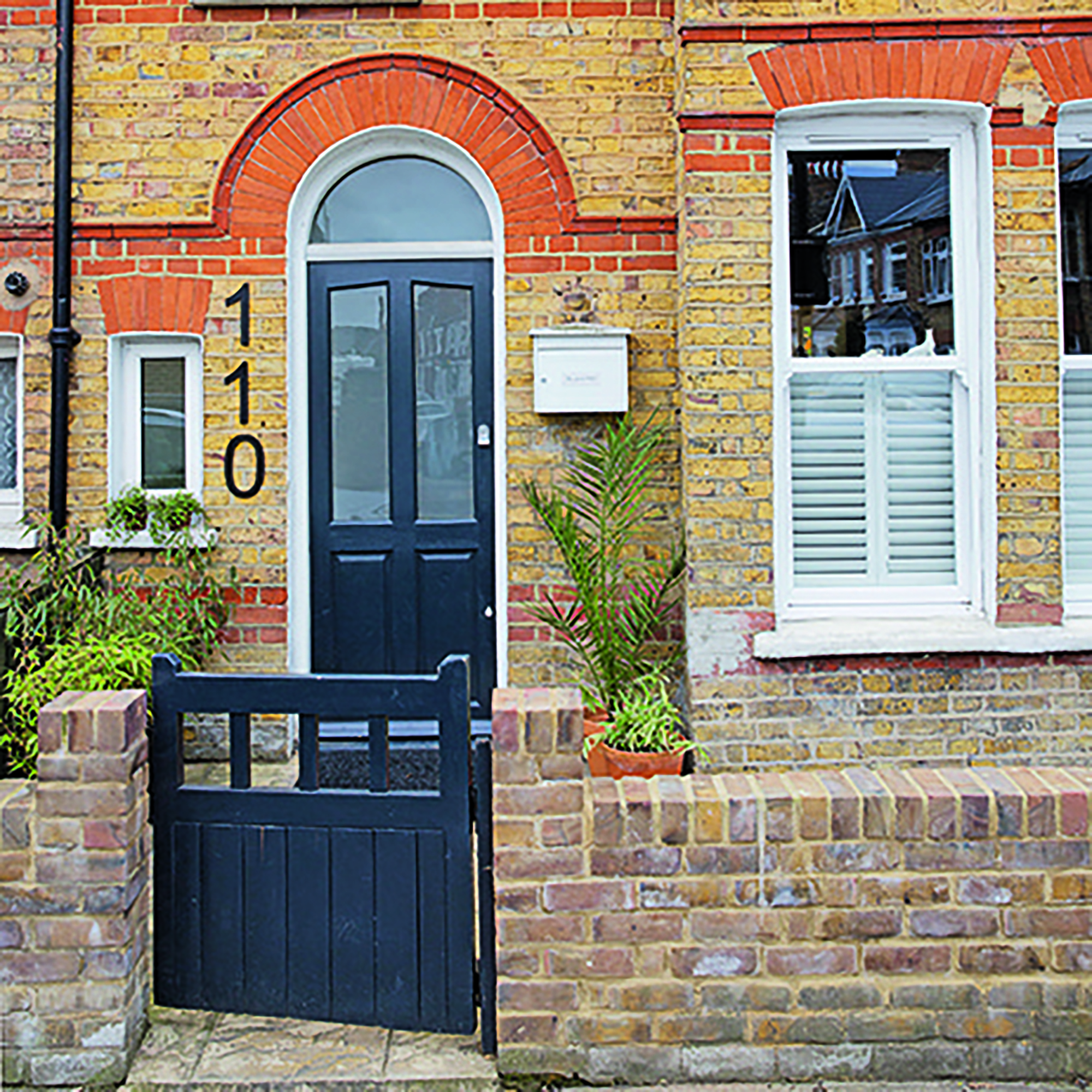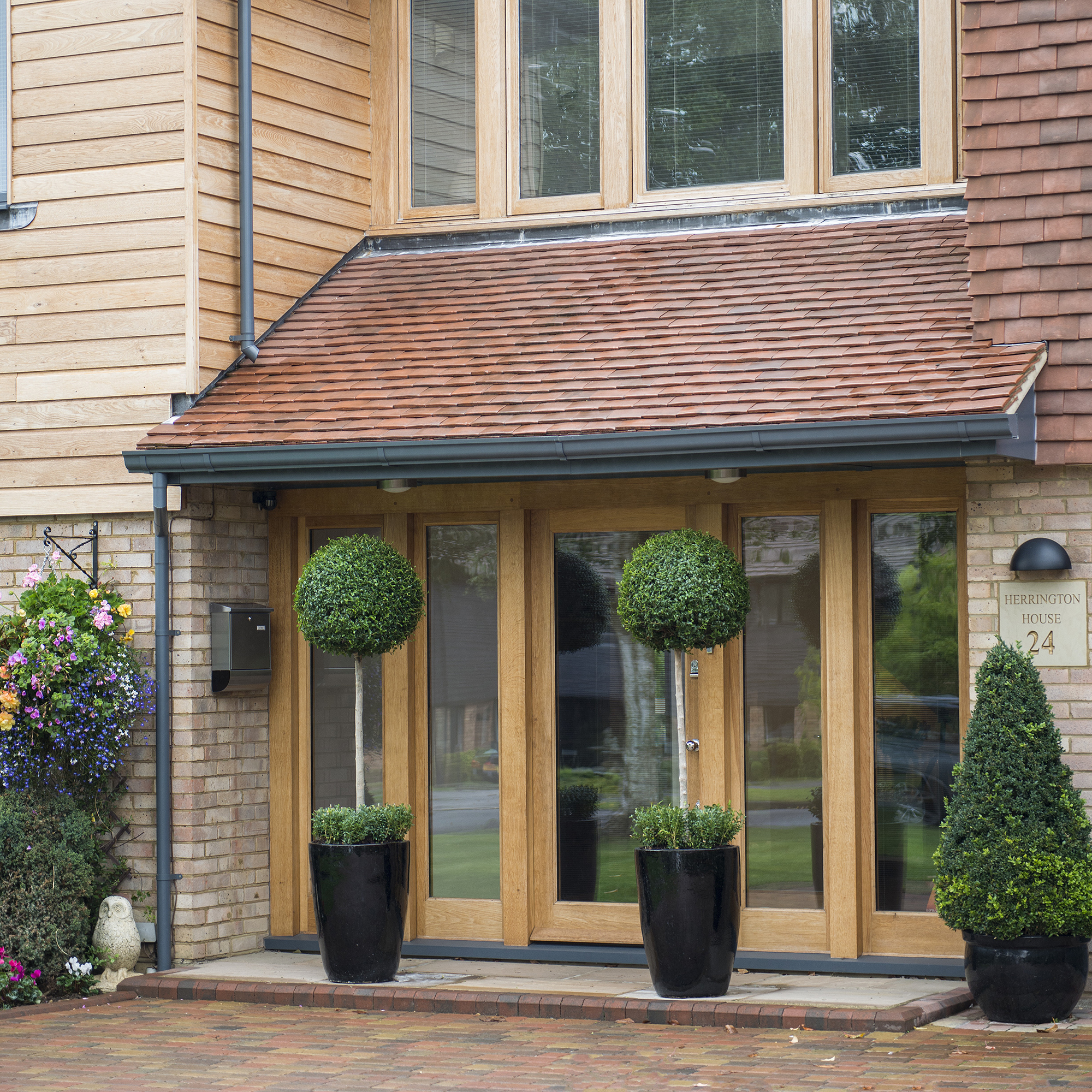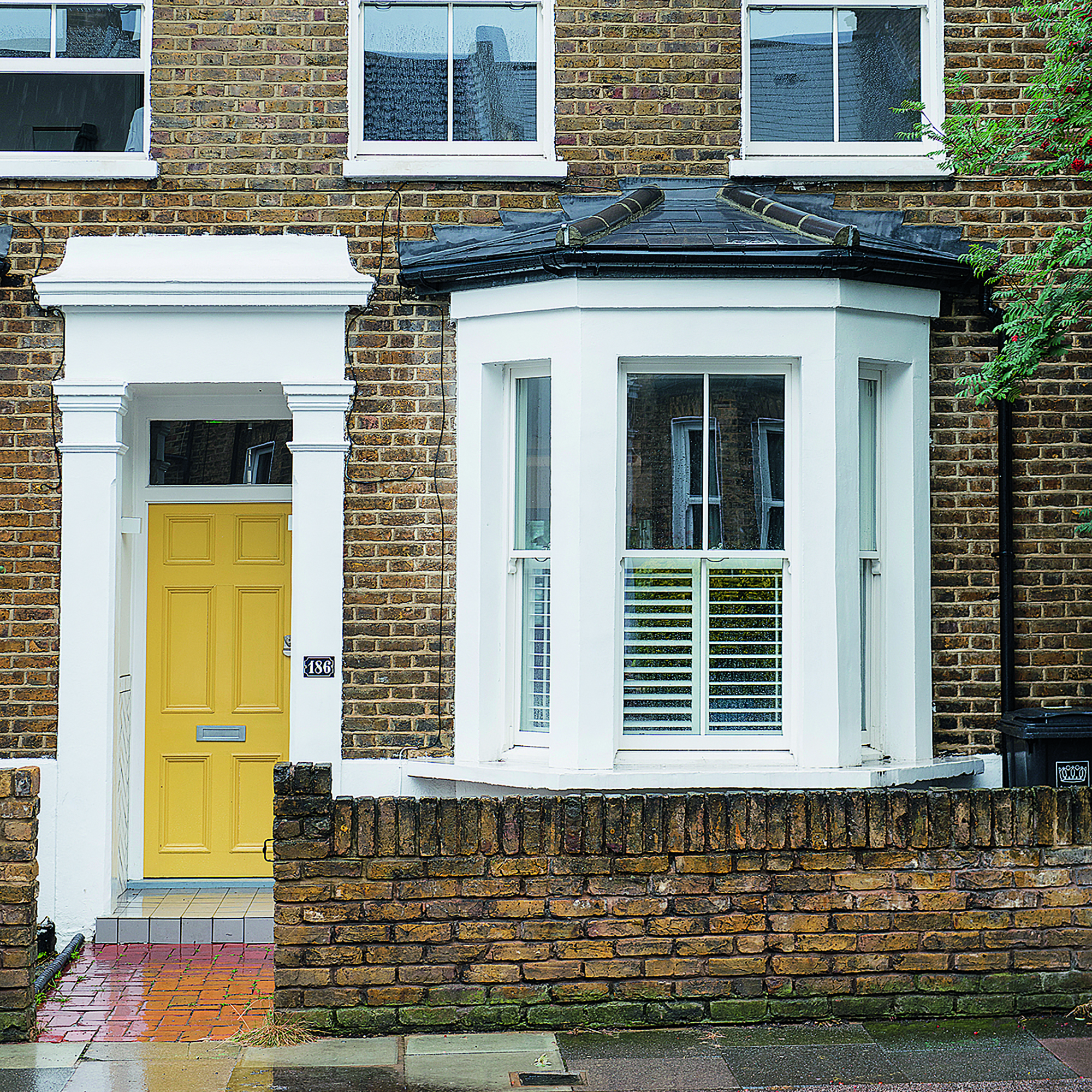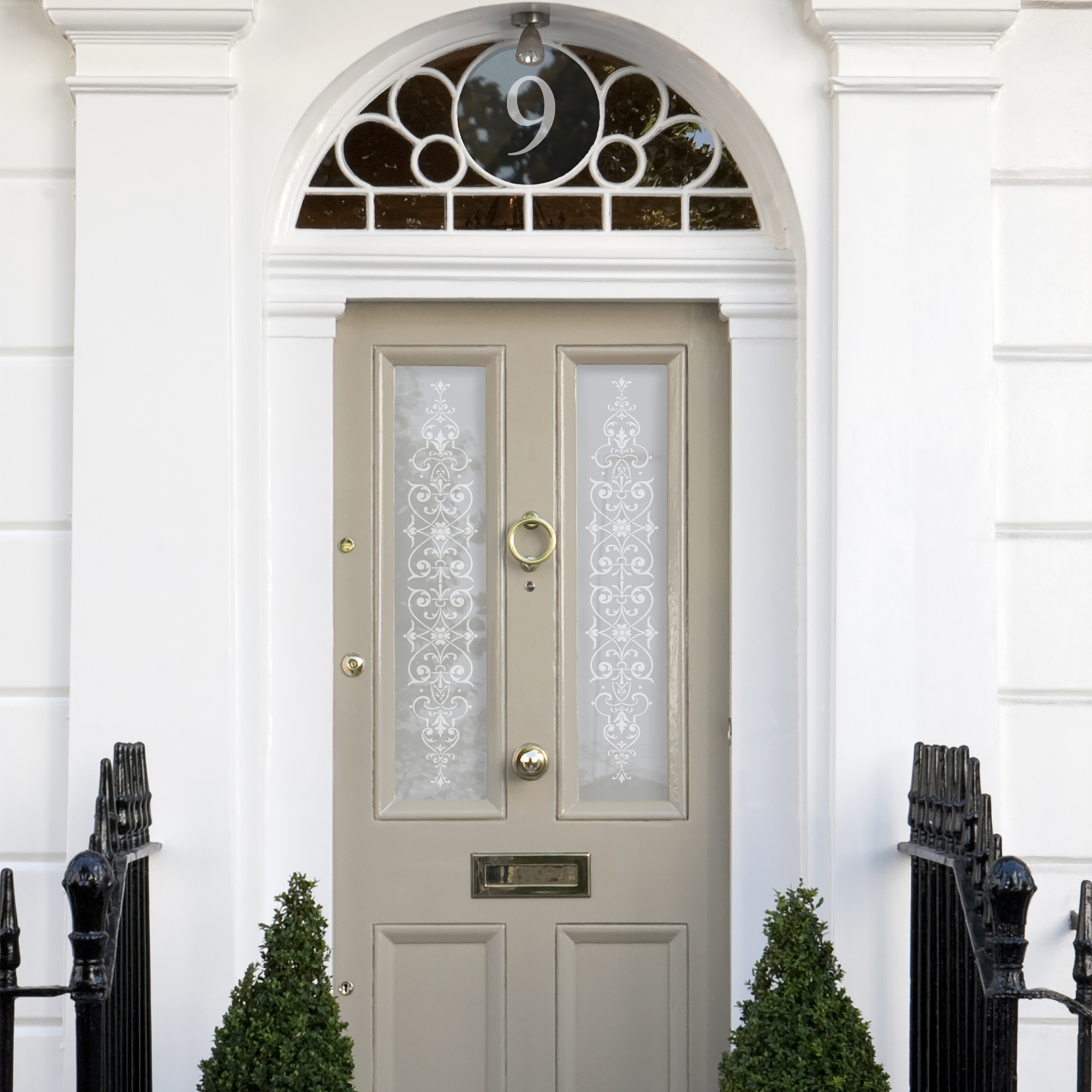
Feeling like your front door needs a refresh? What you really might need are some house number ideas to refresh the style of your entryway. It might be that your house number or nameplate is looking weathered and hard to read, or it might just not be in keeping with the style of your front door.
Although it seems like a small detail, it can make a big difference to the overall curb appeal of your property. And because it's a small feature, it will be a fast and affordable update that takes no time at all.
Whether you have a modern home or a period-property, there are so many house number ideas out there so that you can find an option that suits your overall aesthetic. From stainless steel and brass to sandstone and mosaic, this is just a number of the house number looks you can go for. So if you're working on updating your front garden or even hallway, then consider focusing on the finishing touches - there's your weekend project sorted.
House number ideas
If you want to refresh the appearance of your front door, but don't want to replace the whole thing, then updating the house number is a good compromise. It has the ability to change how your entrance looks, without breaking the bank. it's important for guests too, as it will make their experience with finding your house hassle-free - setting any first impressions off to a great start.
'A presentable front door is the key to a good first impression, this is one of the first aspects of a home that guests are met with so it is important to place your individual stamp on it and set a good tone for the rest of your home,' says Anna Elkington from Melody Maison.
'There are many different ways to jazz up a front door, from paint to decoration or alternatively a whole new door.'
1. Make it unmissable

Fed up with guests missing your house or post ending up next door? An ultra-large house number might just be what you need.
Regardless of whether you have a small doorstep or more of a grand entrance to your home, you can make the most of brickwork by attaching large numbers either vertically or horizontally.
'If your home is set back from the street, consider using oversized door numbers. Larger numbers are easier to see from further away. Smaller numbers will be less visible and more difficult to read. Large door numbers can look great. Be sure to choose a font that goes well with the aesthetic appeal of your home,' advises Gregory Smith from PriceYourJob.
Not only is the effect stylish, eye-catching and contemporary, but it also serves a truly practical purpose of making sure that your house number is noticeable.
If you're making your door number large, then why not opt for a bold colour? We love how contemporary this black brushed number is.
A floating finish house number is a subtle design feature that goes a long way. This looks especially stylish against the backdrop of rendered properties.
Brushed silver will add shine to an entryway without scratching with daily wear and tear. Match with stainless steel door hardware for a cohesive look.
2. Go with sandstone

If you want to give your house number a dedicated home, then a dedicated placard might be the way to go. You can have these made with your house number or name on, and in a variety of different materials to match the exterior of your property.
Sandstone is a great choice for countryside homes as it offers a simple appearance that blends both traditional with an on-trend touch. It will coordinate well with lighter brick or add an organic element to wood-fronted buildings, like converted barns.
Simple yet effective, this stone house number plate will match with countryside properties and new-build homes alike. The black font also looks handpainted.
If your house is named, not numbered, then this limestone sign is guaranteed to make a grand first impression. The font is etched on too, offering a subtle yet stylish look.
This house number from Wayfair combines what we love about our other two picks. It has a pared-back look with a matching sandstone number that stands out just the right amount.
3. Stick to a small design

Picked a statement front door colour? Pair it with an understated house number. Sometimes small is the way to go if you want your paint to take centre stage, so a modestly sized house number will fly under the radar.
It's also wise if you have a small porch area with limited space around the doorframe, as it will sit nicely within the width.
This traditional ceramic house sign has room for both a house name, number, or even street name. The circular design also offers a homely feel that will stand the test of time.
Slate is a versatile material for a house number. It will match modern properties but also has an organic look that will complement barn conversions and countryside abodes.
Sometimes simple is best. A self-adhesive chrome number makes it easy for you to create your own combination, and place exactly where you want it.
4. Use a sticker

Front doors can be expensive to update, so if you're looking to save costs on the outside of your home and instead spend it on the inside, then consider opting for a house number sticker.
Instead of footing the cost of getting a number made, you can affordably update the style of your house number by using a sticker on the glass part of your door.
Gregory also recommends combining this with patterned window film: 'With a range of styles and designs to choose from, it’s easy to find something that suits the aesthetic of your home. In addition, this is also a great way of adding a bit of privacy to your front door.'
Matt black is super chic and noticeable, making it a great option for a house number idea that will make a statement on your property.
Take inspiration from townhouses and restaurants with a custom gold house number sticker. The gold foiling looks premium and will be perfect peeking out the top of a doorway.
House number decals offer a traditional look, without the commitment. If your tastes change, or it begins to look tired, you can simply switch it out for something new.
5. Make use of plant pots

DIYing your number is an incredibly easy task, and you could even get your kids involved to make a house really feel like a home. Placard styles are simple to replicate and decorate using leftover kitchen tiles, stone from a garden path and any remaining paint from inside your home. This is also a fun way to tie the interior and exterior together.
Plant pots are also an easy front garden idea that means you can contribute to your green space while also serving a function. Terracotta pots offer a great foundation for paint or chalk, as well as an entertaining weekend activity.
The white wash of this terracotta plant pot makes it look perfectly worn in - great if a squeaky clean style isn't quite your thing.
IKEA plant pots are ideal for those on a budget, you can pick this up for a couple of pounds and you won't worry about it wearing with time and bad weather.
This terracotta plant pot with square handles looks like it belongs on a Greek island. Perfect for making your front door area feel like a retreat.
Where should you place a house number?
There is no right or wrong position for a house number, it depends entirely on personal preference and the overall design of your home. Ultimately, a house number is designed to help people find your property, so the best placement will be somewhere that is easy to see from the street.
However, this will also depend on the style of your door. If you have large glass panels for example, then you might need to decentre the number to the side of the entryway. Or if you have a traditional four panel door, then should be ample room to place it in the centre.
'More commonly houses display a metal number attached to the centre of the door, however, there are many ways to avoid this basic design,' says Anna Elkington, from Melody Maison
'A simple change can be playing with the placement of your door number, this can be done by placing it next to the door handle instead of the centre of the door to create an interesting design.'
Can you make your own house number?
House numbers are an easy home DIY to undertake as a weekend project. Most of the options on the market are affordable, so you won't need to worry about breaking the bank to update the look of your front door. However, if you want to minimise how much you spend, then you can also easily make your own.
Utilising leftover tiles or stones is a great way to use up extra material from existing DIY projects, and you can customise them with paint and stencils to make your own house number.
You can also think outside the box by decorating plant pots or wheelie bins with your house name or number, to make it even easier for guests to find your house without needing to attach anything to your doorway.







